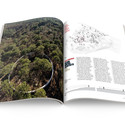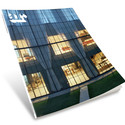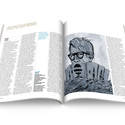ArchDaily continuing our partnership with the architectural Review, bringing you brief introductions to the themes of the monthly editions of the magazine. In this editorial from December 2014 the number of AR, AR Editor Catherine Slessor ruminates on the contemporary approach memorials, arguing that "architecture can seldom really grasp the notion of absence, culture holes memorial in comforting banality.”
Always not mix this year, the relationship between the building and the memory has been a particularly busy resonance. The centenary of the First World War burst was framed by the familiar tales of slaughter and sacrifice, while the 25th anniversary of the fall of the Berlin Wall marked the time when communism in Europe was finally weakened and collapsed. No doubt it is, period events defining deep, but how they are integrated form is memorialised often problematic.
with the obvious exception of Lutyens' cenotaph, and perhaps the wall of the Vietnam war Maya Lin in Washington, most war memorials are usually excruciating exercise in feeling or bombast. Encapsulation a disturbing sense of shock and emotional numbness, exquisite refinement stripped Cenotaph control an intensity that the ceramic poppy field conceit temporarily housed in the Tower of London moat to mark WWI centenary perhaps can not hope imitate.
But as Tom Wilkinson stressed, we tend to get the monuments we deserve, thanks to a combination of political cowardice and the insidious creep cultural sanitization. A century later, the act still painful memories of elementary reduced to a table delight of spectators who looks like an explosion in a museum gift shop. And indeed, as the London memorial tower is dismantled, individual poppies are sold to the public for charity, so you can buy your own piece of history.
Now also dismantled the Berlin Wall has undergone disintegration and reification curiously similar, but more humiliating. Once a symbol of hate oppression and intolerance, it became a memorial involuntarily pop cheese, large sections shipped out to forlornly in municipal seats as monuments to political hubris, while small pieces are "pixellated fragmentary memories in living rooms around the world," as Rob Wilson writes.
my first visit to Berlin during a field trip for students in 1981 and did the usual tourist pilgrimage to gawp, hypnotized, wall from a platform scaffolding in front of the Reichstag bombed. Beyond the band of death, which claimed the lives of at least 136 people, was a veritable terra incognita now unimaginable in the present era in satellite mapping freewheel and Google Street View. Despite their proximity, the East and West Berlin had little or no conception of life and landscapes of each. The wall did its job. The empty physical left by his fall was filled by a predictable mixture bland buildings for shopping and culture, but for a time worrying vacuum of his absence and topography decaying spoke far more eloquently Berlin and violent, the joint history of Europe.
And here, perhaps, is the paradox. At the heart of any memorial culture is the notion of absence, the architecture can seldom really understand or interpret. So the fact that so often falls into the comforting banality really should not surprise us.
Subscribe to The Architectural Review



 5
5
Posting Komentar